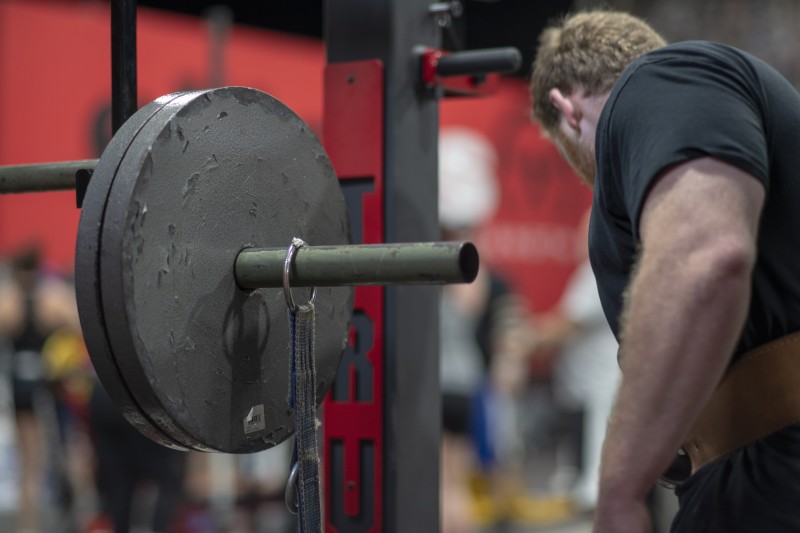
Clint Darden is like my training therapist. Clint will often poke and prod me about various topics as I discuss my thoughts. Recently, I compared my current ability to do only sets of 12 on the glute ham raise to my best set of around 50 reps. Clint’s response was “Just because you can do 50 reps doesn’t mean you should.” He was correct. Reps above 10 without a band do very little if anything for my squat or deadlift.
In training, many choices must be made. Making the correct ones is very important. Choosing correctly will help you to make faster progress and avoid injuries. Just because you can do something doesn’t mean you should.
Squat Every Day
I don’t know who had this idea, but you shouldn’t follow suit. Maybe you can squat every day, but how many every day squatters do you know in the top-10 ranks? Squatting every day might give you a temporary boost in strength, but it won’t build your weaknesses unless you are an absolute beginner. The strongest muscles will do most of the work. If you are doing it to improve your technique, you will still need stronger parts to move more weight and fix the many technical corrections holding you back.
Instead of squatting every day, invest that time in extra assistance work, sled dragging, and more recovery work. Investing less time in these three areas will get you more results than squatting every day will. You will also reduce your spinal compress and your likelihood of developing repetitive use injuries. You will also be excited to actually squat when it is time to do it. Just because you can squat every day, doesn’t mean you should squat every day.
The Future Method
The future method is an excellent tool for overloading and preparing the nervous system for heavier weights. Without the right mindset, the pursuit of numbers can make you greedy. Getting greedy can make you slap on the biggest band you have in your bag so that your numbers look impressive for Instagram. Real lifters know the truth. Numbers on the platform, not in the gym, are what matter.
Get more out of your training than it does out of you. Less wear and tear on the body and nervous system comes from making wise decisions. You want to select a band where at the top, you get a true weight that is around your third attempt or slightly above it. Most lifters do just fine using a halved micro or halved mini band for squats and up to a light band singled for benching. It does depend on how you set it up, but no matter how you do it, you want to be consistent. The future method is about the near future, not 10 years from now.
Rack Pulls
Rack pulls or block pulls are another movement where people think that the heaviest weight possible is best. Watch a beginner slap on plate after plate with a weight that is well above his or her max. This is often described as training his or her lockout, but in reality, he or she can’t get 75% of that weight above the knees. Maximal weights are chosen over maximal results. Just because you can hoist up a weight that is 120% of your deadlift doesn’t mean you should.
The key partials are to choose the position where you need the most work. I’m talking about the position where you start to slow down, before the point where the bar stops. I will use myself as an example. My conventional deadlift was 700 pounds in a meet. My rack pull maxes were 680 with the plates raised 2 inches, 660 four inches off the floor, 725 with the plates raised 6 inches, and 800 with the plates raised 8 inches. Pin two is the worst position, and that is where my work is still done today. Keep your ego in check, and work your weakest position, not the strongest. When that position improves, your deadlift should improve.
Train Alone
I train alone 90% of the time. I am my coach. I am also both my best and worst training partner. I get myself into bad habits, talk myself out of hard work, and skip exercises I know will make me better. I have no one to push me, catch my technical mistakes, or cue me while I begin to strain. I have no spotters to save me and no one to call me out when I am lacking guts.
It really sucks. When training with a group, my progress is amplified. I train harder and do more work. I don’t want to lose. I understand that for some, time, location, and personalities can be roadblocks to training in a group. Find a way around them as best as you can. This is an investment that will improve your training more quickly than almost anything else.
Sundays are the only day I can really train with anyone. I make this a priority, and it is when I do the work I can’t do alone. Even when I didn't have a steady group of people to train with, I made it a priority to travel and train with other lifters stronger than me. It allowed me to learn, get coaching from fresh eyes, and be around people who had the strength I wanted. If you train alone most of the time, make it a priority to train with someone at least once a week. You will be better for it.
Do you notice a trend with everything written above? If you didn’t, let me break it down for you. You want the minimal effective dose. Exercises must be chosen with the intent of improving. Training is not just about moving the most weight. Just because you can do something doesn’t mean you should. Get more from your training by making smarter choices.













1 Comment